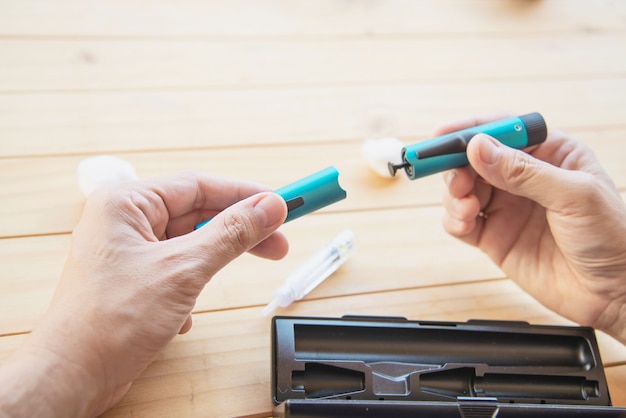Blood Sugar Monitoring—also referred to as ‘glucose monitoring’—is a mainstay and an essential component of diabetes management. It provides you and your physician with vital information regarding the severity of your condition and the efficacy of your current treatment. It also allows your physician to be able to set goals and targets for you to maintain your blood sugar within a safe and manageable range.

At its most basic, Diabetes Mellitus is a chronic metabolic disease that is related to high uncontrolled levels of blood glucose. This occurs when the body cannot produce the necessary insulin to control blood glucose, such as with Type 1 Diabetes, or when the body becomes less sensitive to the presence of elevated blood glucose, as with Type 2 Diabetes. When blood glucose is left uncontrolled, it can lead to several dangerous complications that affect multiple organs in the body. These complications include hypertension, heart disease, end-stage renal disease, poor wound healing, and decreased immunity. These effects continually develop over time and when treatment is delayed could eventually be irreversible.

As such, the recognition and diagnosis of diabetes are key and this all begins with measuring one’s blood sugar. If one has associated risk factors, a strong family history, or the presence of symptoms associated with diabetes, your health care physician may order blood sugar tests. These usually involve fasting and the drawing of blood to be able to measure the levels of glucose circulating in your bloodstream. Your physician will then compare these results to the guidelines set by specialized medical professionals. It can determine if you are either pre-diabetic, which are those at high risk for developing diabetes, or if you are already diabetic.
The classification of your condition, whether Type 1 or Type 2, the severity of the disease, and the current treatment you are receiving, will determine the type and frequency of blood sugar monitoring you will have to do. In most patients with Type 1 Diabetes receiving insulin therapy, self-conducted blood glucose monitoring may be required.
Self blood glucose monitoring will generally require you to have your own blood glucometer. This device would require you to use a small needle to prick yourself and draw a small amount of blood so that the instrument can measure your current blood sugar levels. In most cases, this is generally done at different times of the day and before or after meals. This is due to the fact that blood sugar can fluctuate throughout the day and with meal intake. Measuring this daily is essential for both you and your physician to determine whether your current treatment is effective and if you are kept within a safe blood glucose range. Your daily blood sugar target or your target range is important for two reasons. First is to evaluate whether your treatment (i.e. your insulin regimen) is adequately controlling your blood sugar. Second and equally as crucial is to prevent episodes of hypoglycemia.

Hypoglycemia is a common and possibly dangerous side effect of diabetes treatments. Moreover, hypoglycemia can occur when an individual’s blood sugar levels dip below the necessary amount to keep the body functional. If kept below normal, you may develop acute symptoms of dizziness, lightheadedness, or even fainting spells and seizures. These symptoms and complications may develop quickly and lead to a trip to the emergency room, thus strict monitoring is required. Hypoglycemia may develop either due to the dose of insulin being too high or if a patient is on a strict diet and skips meals. As such, it is very important for both you and your physician to set clear blood sugar target parameters to prevent both hyperglycemia and hypoglycemia.
Self blood glucose monitoring will require clear communication between you and your health care physician. You must be properly instructed on how to do it and set a clear schedule as to when to do it. However, if done correctly, blood sugar monitoring will help you gain control of your condition. It will give you confidence in knowing that you are a key part of the management and that you are controlling your condition. Most patients eventually develop a routine and easily integrate it into their daily routine. With the development of several products that can assist you, there is now more ease and comfort in self-monitoring.

